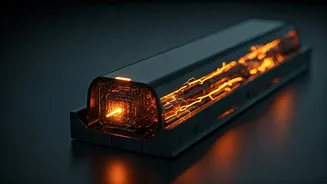Battery Challenges Explored
Lithium-sulphur (Li-S) batteries hold immense promise as a next-generation energy storage solution due to their high theoretical energy density and the abundance
of their constituent elements. However, their practical application has been hampered by significant challenges. One major issue is the notorious 'shuttle effect,' where polysulphides, generated during the discharge process, dissolve in the electrolyte and migrate between the electrodes. This leads to rapid capacity fading and poor cycle life. Another critical problem is the low electronic conductivity of elemental sulfur and the formation of poorly conductive lithium sulfide (Li2S) during the discharge process. These factors severely limit the rate capability and overall performance of Li-S batteries. Scientists are actively tackling these hurdles to unlock the full potential of Li-S batteries, which could lead to significant advancements in electric vehicles and grid-scale energy storage.
A Dual-Level Strategy
To address the challenges, scientists have developed a two-level strategy aimed at enhancing the performance of Li-S batteries. The first level of the strategy involves the use of a specifically designed cathode. This cathode is constructed with a unique architecture. The cathode is designed to effectively trap the polysulphides. This innovative approach prevents the shuttle effect and improves the lifespan of the battery. The second level focuses on enhancing the electronic conductivity within the sulfur electrode. This is achieved through the use of advanced materials. These materials facilitate faster electron transfer. This ensures more efficient utilization of the active sulfur material. This dual-level strategy is key to creating batteries that are more efficient and long-lasting.
Cathode Design Innovations
The cathode plays a critical role in the operation of Li-S batteries. The innovative cathode design is engineered to capture and contain polysulphides. These components migrate throughout the electrolyte, causing the battery to degrade. Researchers have explored various approaches to create these cathodes. They commonly use porous materials and introduce strong chemical interactions to trap the polysulphides. By effectively trapping the polysulphides, the cathode design minimizes the shuttle effect. This leads to a substantial improvement in the battery’s cycling stability. Furthermore, optimizing the cathode's structure can enhance the transport of lithium ions and electrons. This also improves the overall rate capability of the battery. The key to the cathode design lies in its ability to simultaneously address polysulphide dissolution and improve overall battery performance.
Boosting Electron Conductivity
Enhancing electronic conductivity is crucial for maximizing the efficiency of Li-S batteries. The low conductivity of sulfur and its discharge product, Li2S, severely limits the battery's ability to deliver high power and achieve rapid charging. Scientists have developed methods to address this issue. They often introduce conductive additives, such as carbon nanotubes or graphene, to the sulfur electrode. These additives create pathways for electrons. This boosts the battery’s conductivity. Another approach is to develop composite materials that combine sulfur with conductive frameworks. This improves electron transfer. By improving the electronic conductivity, the battery can operate at higher rates. This also leads to better performance.
Looking Ahead: Impact
The development of these next-generation batteries offers promising implications for the future. The enhancements in Li-S battery performance could revolutionize various sectors. Improved energy storage is crucial for the advancement of electric vehicles (EVs). It enables greater driving ranges and quicker charging times. Moreover, these improved batteries are perfect for grid-scale energy storage solutions. They would play a pivotal role in integrating renewable energy sources. This contributes to a more sustainable energy ecosystem. By effectively tackling the challenges associated with Li-S batteries, scientists are paving the way for a new era of energy storage. These batteries have the potential to boost energy independence and combat climate change.















